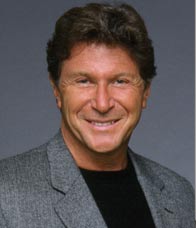|
Interview with Ken Dychtwald on Midlife Crisis
February 2009 - By Dr. Nagendra V Chowdary
 Ken Dychtwald
Ken DychtwaldKen Dychtwald, founding president and CEO of Age Wave 
-
Do these behavioral characteristics
change depending upon the company
a person is working for (for instance
a person working for a company
like Google vs another person
working for not so well known company)
and the economic development
of the country he is working in?
In the New Employee/Employer
Equation Study, we examined the attitudes and behaviors of workers
across different type of organizations.We discovered that smaller companies
those with 500 employees or
less were farmore effective at engaging
and motivating middlescent
workers than larger organizations.
|
|
Middlescent workers say that smaller
organizations are more likely to respect
them for their abilities, provide
ample opportunities to leverage their
talents, empower them to explore
new career directions, provide an ongoing
flow of new, exciting assignments,
and offer work that is meaningful
and fulfilling.
As a result, our study found that
middlescent workers at small companies
are less likely to feel burned out
or to feel they are at dead end in their
careers. They are far more loyal than
middlescent workers at larger organizations
and are more willing to put in
a great deal of effort beyond that normally
expected in order to help their
organization be successful.
Of course, some large corporations
are also effective at engaging andmotivating
their middlescent workers. But
our study findings indicate that larger
organizations can learn valuable lessons
by examining how smaller and
more entrepreneurial companies create
career paths that continue to inspire
and engage their employees
throughout their careers. -
What role do you think a national
culture and personality architecture
(beliefs, attitudes, value systems, outlook
towards life, etc.) would play on
the kind of midcareer life a person
goes through? Is there any evidence
pointing either positive or negative relationship
between national culture
and midlife change?
There is limited research on the
midcareer lives across national cultures.
However, the global study of
two million people from 80 countries
entitled Is Well-being U-Shaped over
the Life Cycle?, published this year
by researchers from the University of
Warwick in England and Dartmouth
College in the US, found that
middlescence is frequently a time of
uncertainty and frustration regardless
of nationality, culture, gender, marital
status, and income.
Nonetheless, this same research
shows that people in their 60s, 70s,
and 80s can be just as happy and fulfilled
as people in their 20s. Therefore
middlescence is a transition period
that many of us experience during
which we begin to redefine our life
and career purpose and meaning. As
we emerge from middlescence, this
research demonstrates that many of
us reengage in fresh activities, passions,
and careers paths that give us
renewed fulfillment and happiness. -
Your research indicates that
midcareer employees end up working
for longer hours than their younger
and older counterparts. Why?
Our national study found that
midcareer employees report the highest
number of hours worked per
week-average of forty-five andmedian
of forty-two, with 30% saying they
work fifty or more hours per week.
As in the other cohorts, there is a significant
difference by gender, with
men reporting almost five hours more
per week than women.
Although our study did not specifically
inquire regarding the reasons for
hours worked, we speculate that
midcareer employees put in more
hours in part because many of them
are at the peak of responsibility in
their companies and are significantly
more likely than younger workers to
be in a managerial or supervisory position.
In addition, younger employees
are twice as likely as midcareer
employees to be working part-time,
and, on the other end of the spectrum,
we find that many older workers
choose to scale down their work
hours, often because they have fewer
financial pressures to put in extra
hours and have the flexibility to focus
their time on work they are most interested
in. -
What were the other findings from
your research? How true are they in
these times of financial and economic
turmoil?
Other key findings from our research
include:
- Employee attitudes, needs, and experiences
are extremely diverse, and
responding to them is key to gaining
engagement, loyalty, and productivity.
- Too many employees are feeling
burned-out (42%) and feel deadended
in their current jobs (33%).
Too few feel energized by their work
or by fresh assignments (28%).
- The performance of managers is
perceived as poor, with only 36% of
employees saying they are satisfied
with the support and guidance received
from their managers.
- Large employers offer significantly
more benefits including things that
small company employees say they
want and yet get less engagement in
return.
- Mature employees (55 and older)
are the most satisfied and engaged,
the happiest on the job, and best adjusted
to the workplace. Retaining
them, including beyond the traditional
retirement age, is key to preventing
shortages of skills and labor
and a resulting brain drain.
1.
Coca-Cola's Belgian Crisis Case Study
2. ICMR
Case Collection
3.
Case Study Volumes
|
